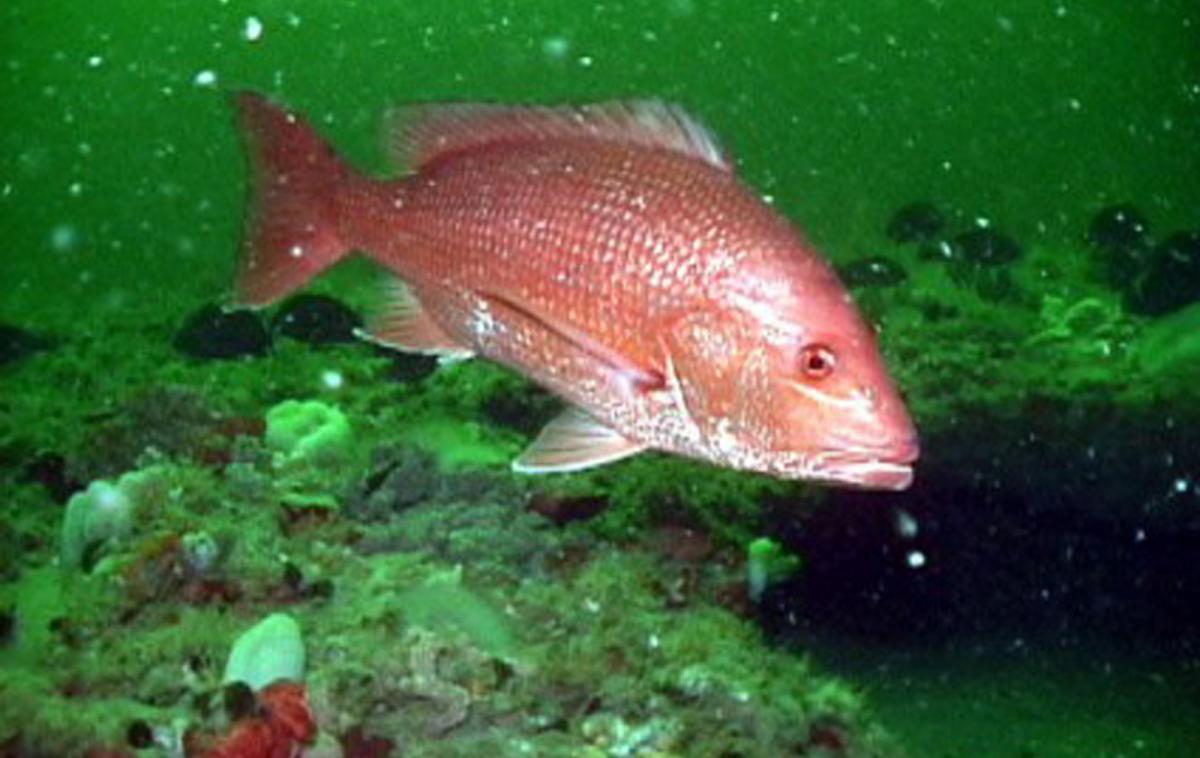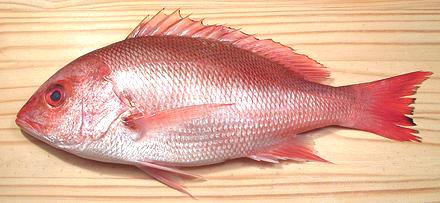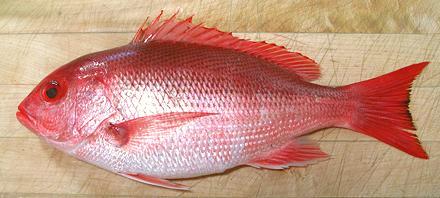
Lutjanus campechanus
FAMILY
Lutjanidae
TAXONOMY
Lutjanus campechanus (Poey, 1860), Campeche, Mexico.
OTHER COMMON NAMES
English: Red snapper; French: Vivaneau campиche; Spanish:
Pargo de golfo.
PHYSICAL CHARACTERISTICS
Typically bass-like in appearance, with a deep body, a single
dorsal and anal fin, and an emarginate caudal fin. There are 10
spines and 14 soft rays in the dorsal fin, 3 spines and 8–9 soft
rays in the anal fin, and the pectoral fin is elongate, almost
reaching the anus, with 17 rays. The eyes are relatively small.
Body color is red with orangish red fins. Grows to about 39 in
(100 cm) in total length.
DISTRIBUTION
Western Atlantic, from Massachusetts (rarely) south through
the Carolinas to Florida, west through the Gulf of Mexico to
the Yucatan Peninsula and southeast to the northern edge of
Cuba.
HABITAT
Juveniles frequent inshore waters, usually over sand or mud
bottoms. Adults prefer rocky bottoms. Depth range of adults is
33–623 ft (10–190 m).
FEEDING ECOLOGY AND DIET
Accomplished predator that feeds upon smaller fishes, crabs,
shrimps, cephalopods, polychaete worms, and gastropods and
urochordates in the water column.
BEHAVIOR
Swims alone or in aggregations just above the bottom. May be
idle during daylight and active at night.
REPRODUCTIVE BIOLOGY
Dioecious; there is no sex change. Males and females migrate
to specific locations to form spawning aggregations between
the months of April and December. Spawning is pelagic, as are
the eggs and larvae. Eggs hatch in about a day.
CONSERVATION STATUS
Not listed by the IUCN but has been shown to be vulnerable
to overfishing as a primary target species and, for juveniles, as
bycatch in shrimp trawls. Fisheries are regulated in U. S. waters.
SIGNIFICANCE TO HUMANS
Important commercial and recreational species.
Other popular Animals
Photo Gallery of - Northern red snapper





 Animalia Life
Animalia Life